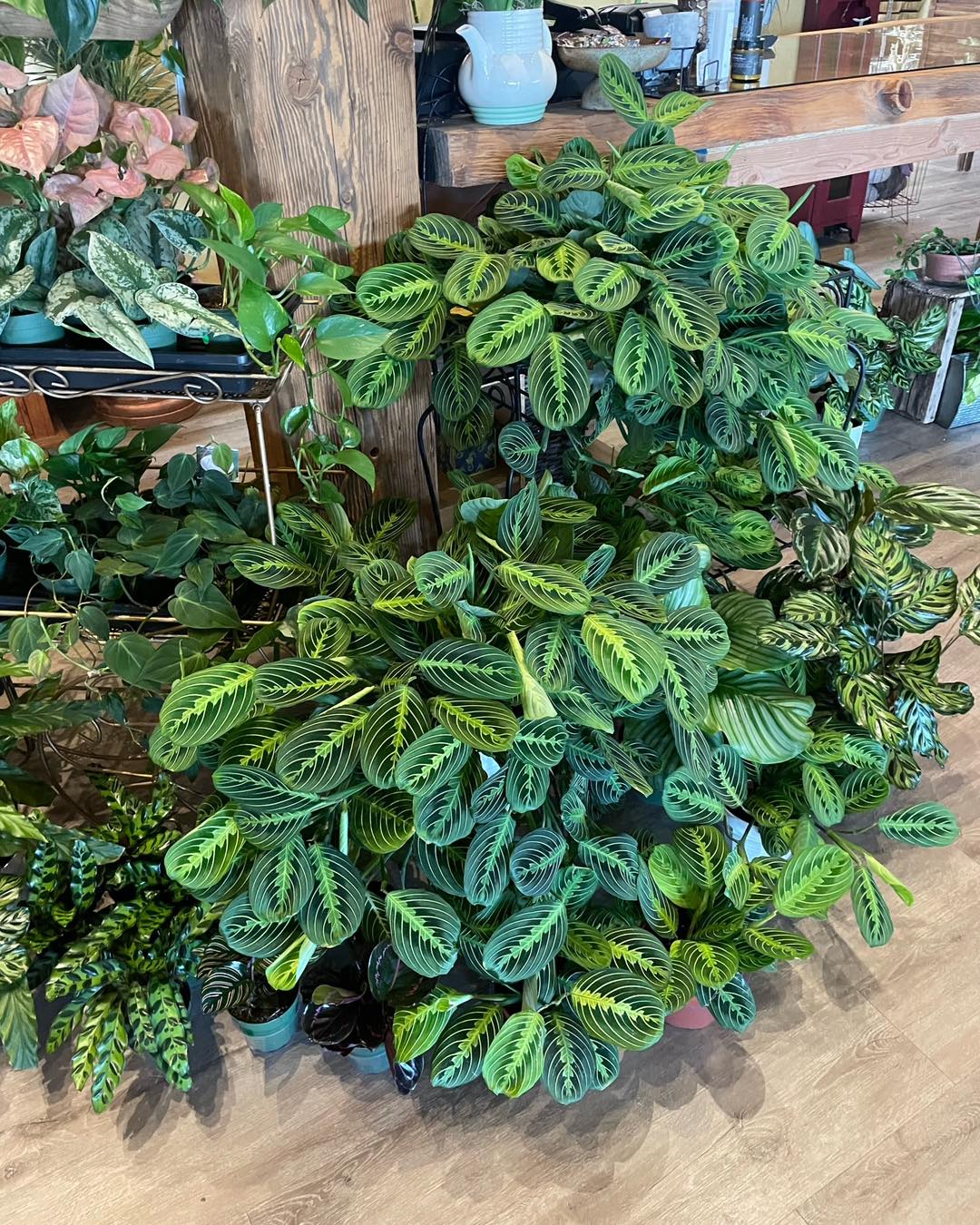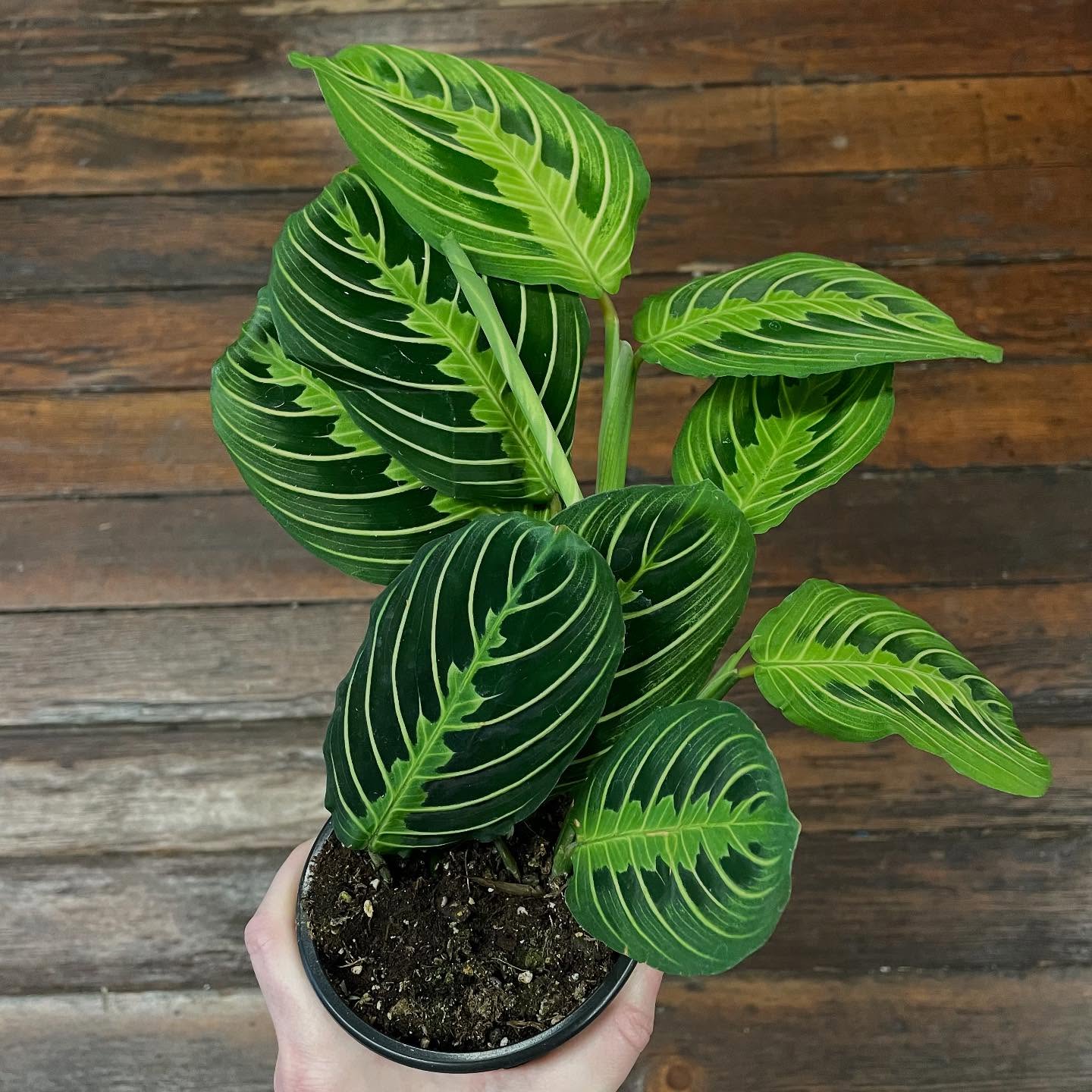
Have you ever been captivated by the mesmerizing dance of a Prayer Plant’s leaves? These captivating foliage artists not only boast stunning variegated patterns but also perform a nightly ritual, folding their leaves upwards as if in prayer. But beyond their theatrical flair, Prayer Plants are surprisingly easygoing houseplants, perfect for anyone who wants a touch of the tropics indoors.
This comprehensive guide will equip you with all the knowledge you need to cultivate a thriving Prayer Plant. From deciphering their light preferences to mastering the art of watering, we’ll unveil the secrets to keeping your leafy friend happy and healthy.
This post may have affiliate links. This means that sometimes when you click a link on our site and make a purchase on Amazon, we may earn a small commission at no additional cost to you. We only recommend products we truly believe in, and your support helps keep us running!
Unveiling the Secrets of the Rainforest: Understanding Your Prayer Plant

Prayer Plants, also known as Marantas, hail from the lush rainforests of South America. Imagine dappled sunlight filtering through the dense canopy, creating a warm, humid environment. This is where your Prayer Plant thrives! Understanding these natural preferences will be key to replicating their ideal habitat indoors.
Light: The Secret Language of Photosynthesis
Prayer Plants are not fans of harsh extremes. They detest the scorching glare of direct sunlight, which can scorch their delicate leaves. Instead, they crave the gentle caress of indirect sunlight. A spot near an east-facing window or a few feet away from a south-facing window is ideal. Worried your home might be a bit on the dim side? Fear not! Prayer Plants can tolerate lower light conditions, although their growth might slow down a bit.
Signs Your Prayer Plant Needs More Light:
- Stretched and leggy growth
- Leaves losing their vibrant colors
- Sparse foliage
Signs Your Prayer Plant Needs Less Light:
- Leaves curling inwards
- Brown spots appearing on leaves
The Art of Hydration: Keeping Your Prayer Plant Moist but Not Soggy
Watering your Prayer Plant is a delicate dance. Aim for consistently moist soil, but never soggy. Overwatering is a recipe for disaster, leading to root rot and the demise of your leafy friend. Here’s how to strike the perfect balance:
- Finger Test: Stick your finger about an inch into the soil. If it feels dry to the touch, it’s time to water.
- The Weight Trick: Pick up your Prayer Plant when the soil is dry and again when it’s moist. The weight difference will help you gauge watering needs.
- Pay Attention to the Season: During the warmer months, your Prayer Plant will likely need more frequent watering compared to the cooler months.
Choosing the Right Water:
Prayer Plants, like many houseplants, are sensitive to the harsh chemicals often found in tap water. These chemicals can cause brown edges on the leaves. Here are your watering options:
- Filtered Water: This is the safest choice, removing any potential impurities.
- Rainwater: Free and full of natural goodness, rainwater is a great option if it’s clean and readily available.
- Letting Tap Water Sit: If these options aren’t feasible, fill a watering can with tap water and let it sit overnight. This allows some of the chlorine to dissipate.
Humidity: Recreating a Rainforest Oasis
Imagine a warm, steamy jungle – that’s the humidity level Prayer Plants crave! Unfortunately, our homes tend to be much drier, especially during winter when heaters crank up. Here are some tips to create a more humid environment:
- Grouping Plants: Place your Prayer Plant near other humidity-loving plants. As they transpire, they’ll collectively increase the surrounding humidity.
- Pebble Tray Trick: Fill a tray with pebbles and water. Sit your Prayer Plant pot on top of the pebbles (ensuring the pot doesn’t sit directly in the water). As the water evaporates, it will increase humidity around the plant.
- Humidifier: For a more permanent solution, consider a humidifier to add moisture to the air.
Feeding Your Prayer Plant: A Balanced Diet for Lush Growth
While Prayer Plants aren’t heavy feeders, a balanced dose of fertilizer during the growing season (spring and summer) can encourage vibrant foliage and healthy growth. Here are some things to keep in mind:
- Frequency: A balanced, diluted liquid fertilizer applied once a month during the growing season is sufficient.
- Winter Feast: During winter, your Prayer Plant will be less actively growing. Reduce or eliminate fertilizer application completely.
- Organic Options: Consider organic fertilizers derived from fish emulsion or seaweed extract.
Signs Your Prayer Plant Needs Fertilizer:
- Pale and dull leaves
- Slow or stunted growth
The Potting Party: Choosing the Right Home for Your Prayer Plant
Selecting the right pot is crucial for your Prayer Plant’s well
Here are some key factors to consider:
- Material: Opt for a pot with good drainage. Terracotta pots are a popular choice as they allow excess moisture to evaporate easily. Plastic pots can also work, but ensure they have drainage holes.
- Size: Your Prayer Plant doesn’t need a massive pot. Choose a pot that’s just slightly larger than the root ball. A pot that’s too big can lead to overwatering issues.
- Repotting: As your Prayer Plant grows, it will eventually outgrow its current pot. Signs that it needs repotting include roots circling the pot and water running straight out the bottom without soaking into the soil. Repotting is typically done every 1-2 years.
Common Ailments and How to Save Your Prayer Plant Warrior
Even the most attentive plant parent might encounter some challenges. Here are some common issues Prayer Plants face and how to rectify them:
Brown Leaves:
- Cause: This could be due to several factors – underwatering, overwatering, low humidity, or exposure to harsh sunlight.
- Solution: Identify the cause and adjust your care routine accordingly. Remove any severely damaged leaves.
Curling Leaves:
- Cause: This is often a sign of low humidity.
- Solution: Increase humidity levels around your plant using the methods mentioned earlier.
Pest Patrol:
Prayer Plants are generally pest-resistant, but occasionally, they might be bothered by mealybugs or spider mites. If you notice these tiny intruders, isolate your plant and treat it with insecticidal soap or neem oil solution.
